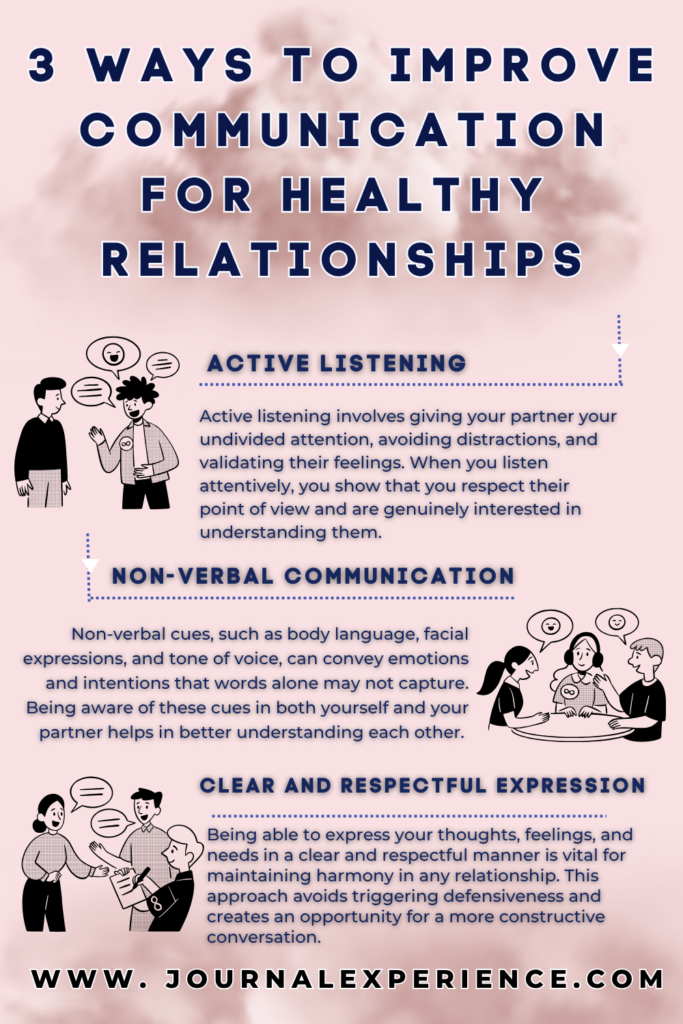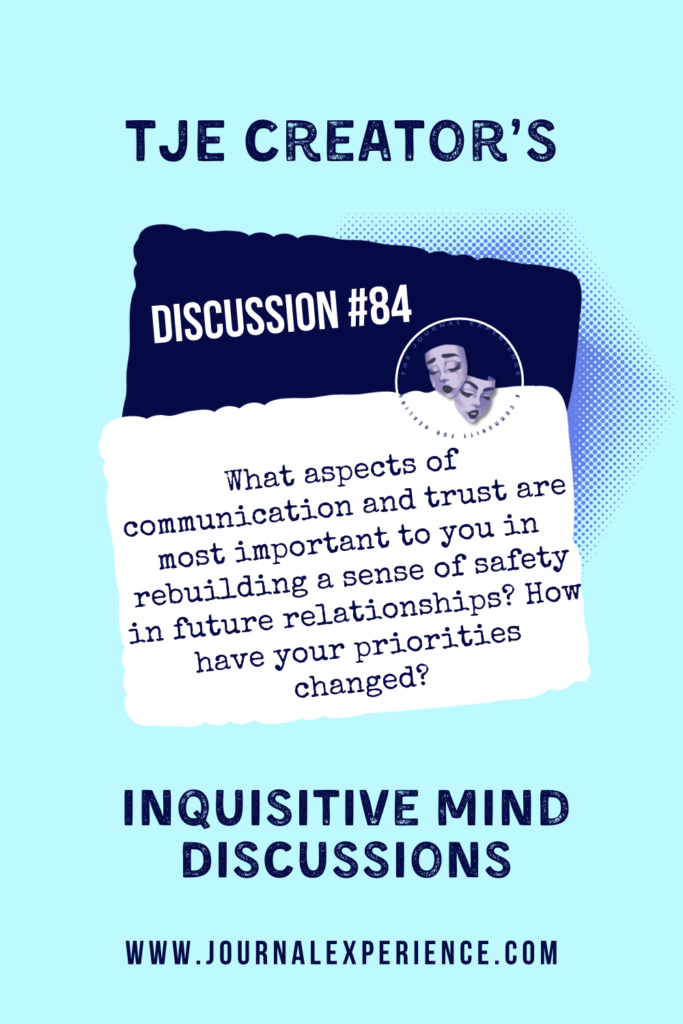Building healthy relationships is essential for creating meaningful connections that stand the test of time. Relationships, in all their forms, require effort, understanding, and commitment. Whether they are romantic, familial, or friendships, healthy relationships are built on trust, respect, and open communication.

These elements serve as the foundation that allows individuals to connect on a deeper level, providing both partners with the emotional security needed to navigate life’s challenges together. Trust creates safety, respect fosters mutual appreciation, and open communication allows for transparency and growth.
These foundational aspects enable both individuals to express their true selves without fear of judgment, ensuring that the relationship remains strong through both joyous and difficult times. In this post, we will explore practical advice on how to nurture these key elements, enhance your communication, manage conflict constructively, and foster emotional intimacy—all crucial aspects that form the bedrock of a thriving, healthy relationship.
Building Healthy Relationships
1. Key Strategies for Building Healthy Relationships
The foundation of any healthy relationship is rooted in certain fundamental pillars. The strength of these pillars determines how well the relationship will withstand challenges, grow, and evolve over time. These pillars—trust, respect, and mutual understanding—serve as the bedrock upon which everything else is built. A strong foundation allows partners to navigate the complexities of life together, face difficult situations with unity, and create a lasting bond.
Trust
Trust is the cornerstone of any healthy relationship. It is not something that can be built overnight; it is a gradual process that must be nurtured with honesty, consistency, and integrity. Trust is about showing up for each other, being reliable, and following through on promises. It’s about knowing that, no matter what happens, you can rely on your partner to be there for you.
Without trust, relationships can falter, leading to feelings of insecurity, fear, and doubt. In the absence of trust, individuals may feel disconnected, misunderstood, or unsafe. Building trust requires transparency—being open and honest with each other, even when it’s difficult. This openness helps create a space where both partners feel confident and secure in their relationship.
It also involves showing vulnerability, allowing your partner to see your true self, including your flaws and imperfections, which fosters deeper emotional connections. When vulnerability is met with empathy and understanding, it strengthens the bond and creates a sense of emotional intimacy. Trust grows stronger when both partners make consistent efforts to honor their commitments, communicate openly, and demonstrate respect for one another’s feelings and needs.
Want to build a deeper foundation of trust with step-by-step guidance?
The Thrive in Love Online Course offers powerful tools to help couples foster emotional safety, open communication, and long-lasting connection.
Respect
Respect in a relationship goes beyond just agreeing with one another; it’s about honoring each other’s individuality, differences, and boundaries. It means recognizing that each person brings their own unique perspective, experiences, and emotions into the relationship. Respecting your partner means valuing their opinions, feelings, and desires, even if they differ from your own.
It’s about listening with an open mind and avoiding judgment, while also acknowledging that your partner’s feelings and needs are just as important as your own. Respect also involves setting and respecting personal boundaries. Each individual has their own limits, and respecting those boundaries—whether emotional, physical, or mental—is essential for maintaining a healthy dynamic.
When you respect your partner, you are showing them that they matter, and this nurtures a relationship in which both individuals feel seen, valued, and heard. Conflict in relationships is inevitable, but respecting each other during disagreements ensures that the issue remains the focus, rather than turning into a personal attack. Practicing respect helps maintain harmony, even during challenging moments, and allows both partners to engage in healthy, constructive dialogue.

Mutual Understanding
Mutual understanding plays a significant role in building healthy relationships. It’s about creating an environment where both partners feel heard, seen, and appreciated. This requires active listening and an openness to seeing things from your partner’s perspective. Active listening means not just hearing words but truly understanding the emotions and intentions behind them. It’s about validating your partner’s feelings, even if you don’t necessarily agree with their point of view. This level of empathy fosters a deep emotional connection, as both partners feel valued and understood.
Mutual understanding also means acknowledging each other’s needs, dreams, and fears. In a healthy relationship, both partners are committed to supporting each other’s personal growth and well-being. This support involves being patient and empathetic when your partner faces challenges and celebrating their successes together.
When both individuals understand each other’s emotional landscape, it becomes easier to navigate potential conflicts and avoid misunderstandings. Mutual understanding also helps both partners feel more secure in the relationship, as they know they are accepted for who they are and supported in their unique experiences.
Moreover, mutual understanding encourages ongoing growth and learning in the relationship. As individuals, we evolve and change over time, and so do our needs and desires. By continually working to understand each other on a deeper level, couples can adapt to each other’s evolving personalities and circumstances, ensuring the relationship remains strong through various phases of life.
Need help turning daily communication into connection?
Try the FREE Masterclass (*EVERGREEN version) to explore practical relationship tools from the Center for Thriving Relationships.
2. Improving Communication Skills for Healthy Relationships
Effective communication is often cited as one of the most important factors in maintaining a healthy relationship. Clear, honest, and open communication allows partners to understand each other’s thoughts and feelings, reducing the likelihood of misunderstandings and increasing emotional closeness.
- Active Listening
One of the most powerful tools in effective communication is active listening. Listening is not just about hearing words; it’s about fully engaging with your partner’s emotions and understanding their perspective. Active listening involves giving your partner your undivided attention, avoiding distractions, and validating their feelings. When you listen attentively, you show that you respect their point of view and are genuinely interested in understanding them. - Non-Verbal Communication
Often, what’s not said can be just as important as the words spoken. Non-verbal cues, such as body language, facial expressions, and tone of voice, can convey emotions and intentions that words alone may not capture. Being aware of these cues in both yourself and your partner helps in better understanding each other. Positive body language, such as maintaining eye contact, leaning in, and using an open posture, can signal warmth and attentiveness. On the other hand, crossed arms or avoiding eye contact can indicate discomfort or disconnection. Ensuring that your non-verbal communication aligns with your verbal messages helps reinforce your sincerity and openness. - Clear and Respectful Expression
Being able to express your thoughts, feelings, and needs in a clear and respectful manner is vital for maintaining harmony in any relationship. Use “I” statements to communicate your feelings without blaming your partner. For example, instead of saying, “You never listen to me,” say, “I feel unheard when I try to share my thoughts.” This approach avoids triggering defensiveness and creates an opportunity for a more constructive conversation. It’s also essential to be mindful of tone and delivery—harsh or sarcastic remarks can erode trust and create unnecessary tension.

3. Conflict Resolution Techniques for Building Healthy Relationships
No relationship is free of conflict, but how you handle disagreements can significantly impact the long-term health of the relationship. When approached thoughtfully, conflict can lead to growth and deeper understanding.
- Stay Calm and Focus on the Issue
In the heat of the moment, emotions can run high, making it challenging to think clearly. It’s important to take a step back and breathe before engaging in the conversation. This helps you stay calm and focused on the issue at hand, rather than letting the argument escalate into personal attacks. Keep in mind that it’s not about winning the argument; it’s about resolving the issue and coming to a mutual understanding. - Practice Empathy
Empathy is the ability to understand and share the feelings of another person. When conflicts arise, it’s essential to put yourself in your partner’s shoes and acknowledge their emotions. This doesn’t mean you have to agree with everything they say, but it shows that you value their perspective. Demonstrating empathy helps to de-escalate tension and fosters an atmosphere of compassion, even during disagreements. - Seek Solutions Together
Rather than focusing on who is right or wrong, focus on finding solutions. Approach the conflict as a team, working together to address the problem constructively. Brainstorming solutions allows both partners to feel involved in the resolution process, ensuring that both of their needs and concerns are addressed. Being open to compromise can also help in reaching a resolution that benefits both individuals, promoting a sense of fairness and equality. - Know When to Take a Break
Sometimes, taking a brief break during heated arguments can be beneficial. If emotions are running too high, it’s okay to suggest a temporary pause to allow both partners to cool down. This prevents saying things in anger that may be regretted later and allows time for reflection before continuing the conversation.

Looking for expert support in transforming tension into teamwork?
The 3 Day Thriving Relationship Workshop is a live, interactive experience designed to guide couples through trust-building and conflict repair.
4. Fostering Emotional Intimacy in Healthy Relationships
Emotional intimacy is the deep connection that allows both partners to be vulnerable and authentic with each other. It’s about sharing your true self without fear of judgment and feeling emotionally supported by your partner.
- Create a Safe Space for Vulnerability
One of the most powerful aspects of emotional intimacy is the ability to be vulnerable. Vulnerability requires a safe space where both partners can express their innermost feelings and desires. When you share your fears, hopes, and dreams, you invite your partner to do the same, which fosters a deeper emotional connection. Being vulnerable can also help build trust, as it shows that you are willing to be open and honest. - Spend Quality Time Together
Emotional intimacy thrives when partners spend quality time together, engaging in activities that foster connection. Whether it’s a regular date night or simply having an uninterrupted conversation, carving out time to be with your partner without distractions strengthens the emotional bond. These moments help reinforce your partnership and remind both individuals of the love and support they share. - Express Appreciation and Affection
Small gestures of appreciation and affection go a long way in fostering emotional intimacy. Regularly expressing gratitude for your partner’s actions or simply telling them how much they mean to you can strengthen your emotional connection. Physical touch, such as hugs, hand-holding, or cuddling, also plays a vital role in building emotional closeness. These acts of affection help to maintain the emotional warmth in the relationship and remind both partners that they are loved and valued. - Be Supportive and Encouraging
Emotional intimacy is also about being there for your partner during difficult times. Offering encouragement, support, and understanding when your partner faces challenges helps deepen the emotional bond. Being emotionally available creates a sense of security, allowing both individuals to navigate life’s ups and downs together.
Overview
Building healthy relationships requires consistent effort and dedication to trust, communication, conflict resolution, and emotional intimacy.
Whether you’re navigating new love or rebuilding connection, remember: growth doesn’t happen by accident—it happens by intention.
Explore the transformational offerings from the Center for Thriving Relationships to build the tools, skills, and heart-centered foundation that lasting love truly deserves.
If you’re ready to strengthen your emotional well-being and grow in your relationships, we invite you to become a member of The Journal Experience or subscribe to our TJE Newsletter and join the experience!